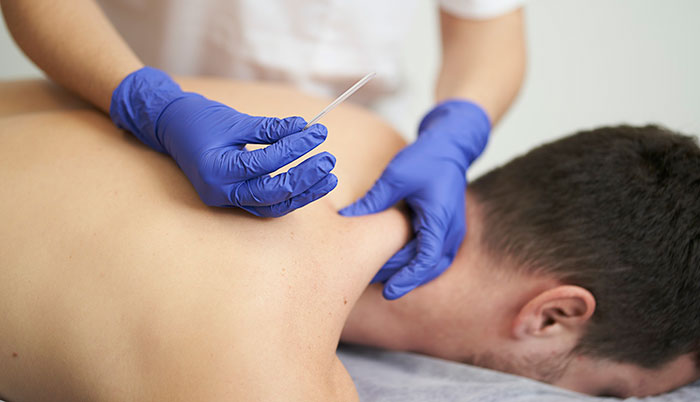Cashel Chiropractic
Dry Needling
Dry needling is a modern treatment designed to ease muscular pain. Its popularity is growing. During a dry needling session at our Lehi, UT, chiropractic office, Dr. Rob inserts several filiform needles into your skin. Filiform needles are fine, short, stainless steel needles that do not inject fluid into the body. That’s why the term “dry” is used.


Dr. Rob places the needles in “trigger points” in your muscle or tissue. The “trigger points” are areas of knotted or hard muscle. The needle helps release the knot and relieve any muscle pain or spasms. The needles will remain in your skin only for a very short period.
How Dry Needling Can Help You
Through dry needling, our Lehi chiropractor provides relief for muscular pain and stiffness. Easing the trigger points improves flexibility and increases your range of motion. That’s why this method is often used to treat sports injuries, muscle pain, and even fibromyalgia pain.
Frequently Asked Questions
We’ve devised a list of the most commonly asked questions about dry needling:
How Many Dry Needling Sessions Will I Need?
Most patients only require 2 or 3 sessions to attain the full benefits of pain relief. Others might need 6 sessions or more. Depending on the condition you are seeking relief for, you may undergo dry needling safely at least once or twice a week.
Why Do My Muscles Twitch During Dry Needling?
When the needle is inserted into the trigger point, a local muscle twitch response occurs, which is a spinal cord reflex. The twitching signals a release of the contracture knot and helps to restore normal muscle length and tension. The twitch response also causes immediate biochemical changes to help break the pain cycle.
How Will I Feel After My Dry Needling Appointment?
You may experience some soreness immediately after treatment in the treatment areas. This is normal and, often, does not occur. Infrequently, patients experience mild soreness a few hours later or even the next day. Typically this soreness is no worse than that following an intense workout.
A patient may also feel tired, nauseous, emotional, and/or somewhat “out of it” after treatment. This is a normal response, lasting only an hour or two after treatment.
